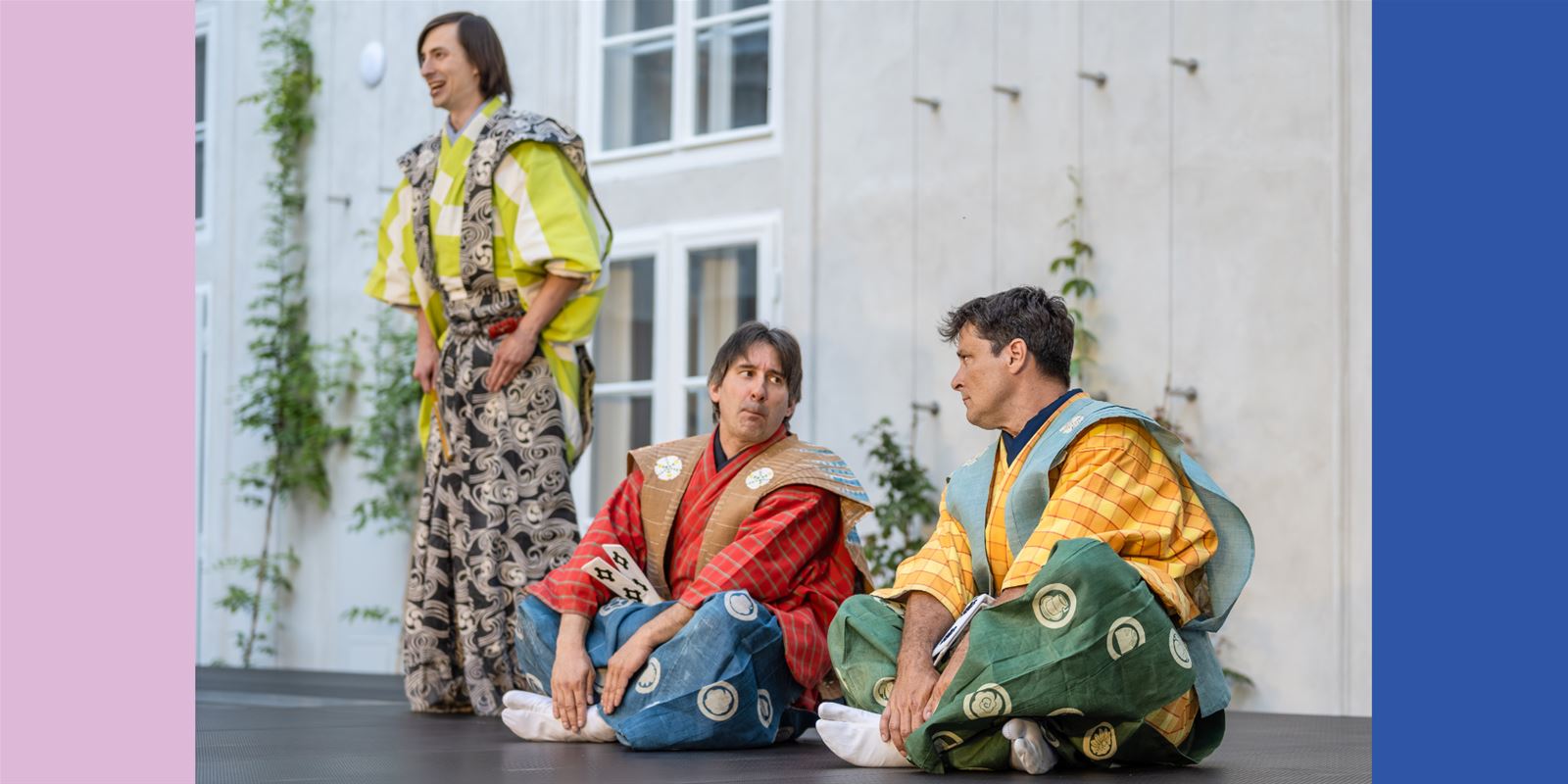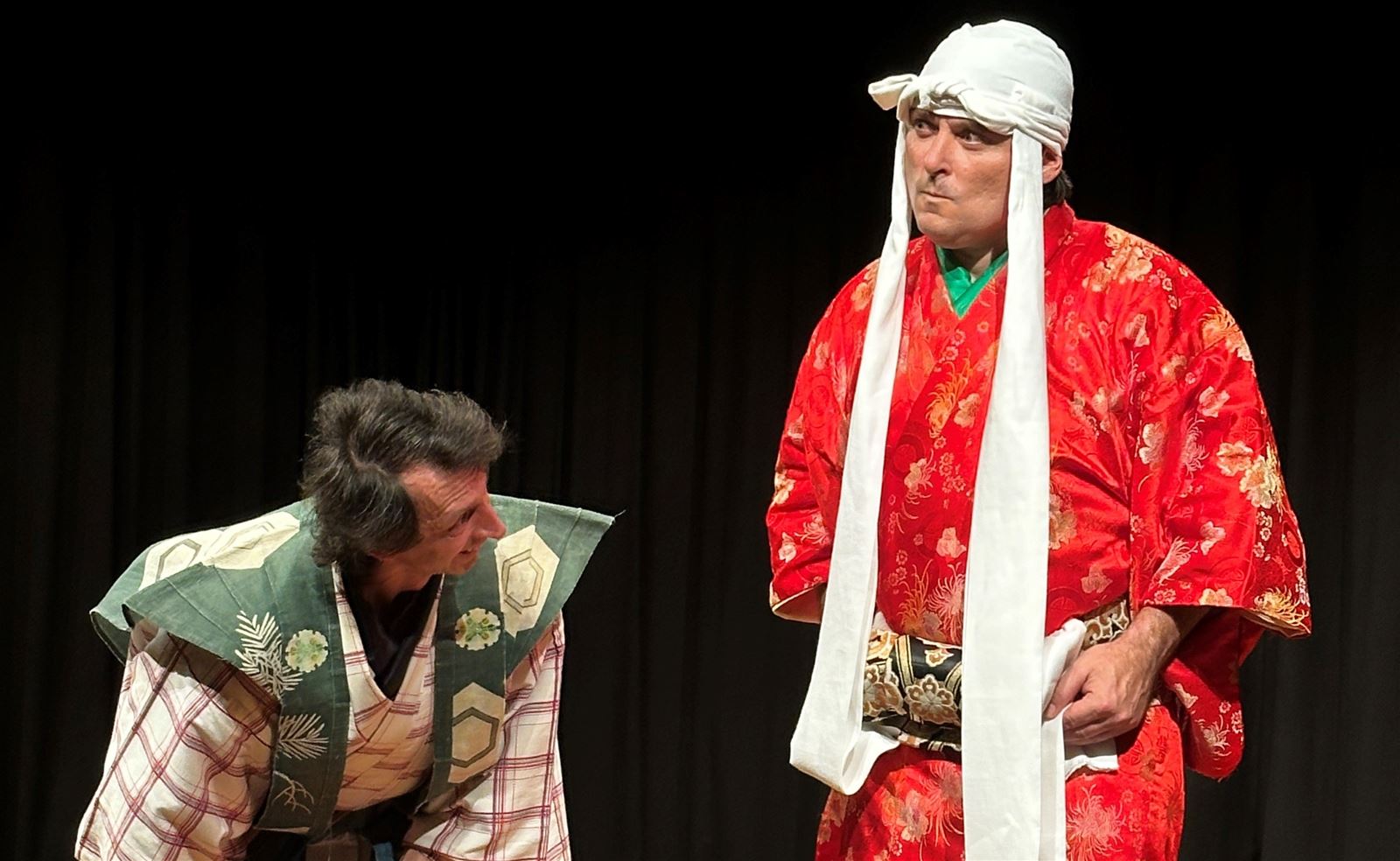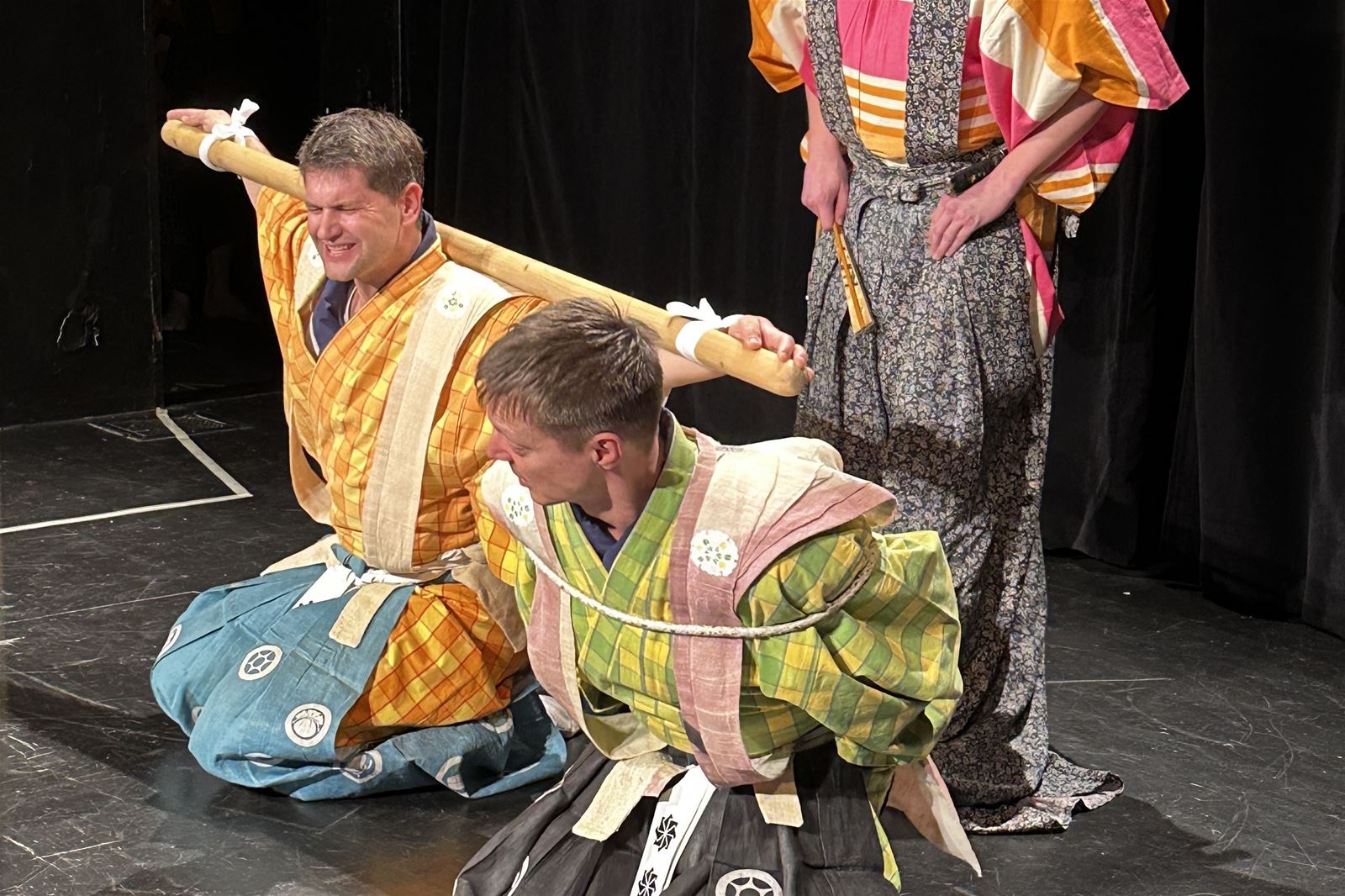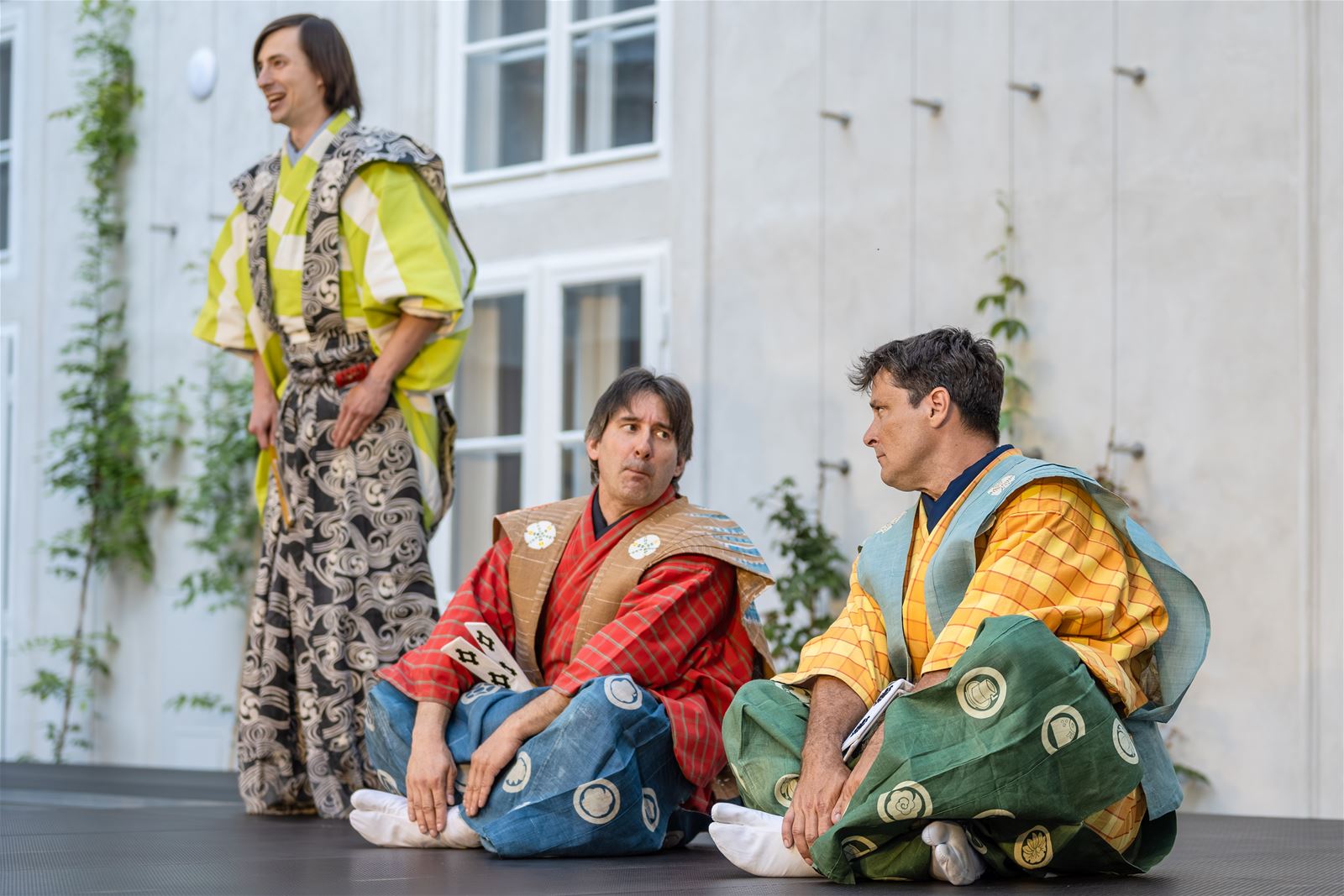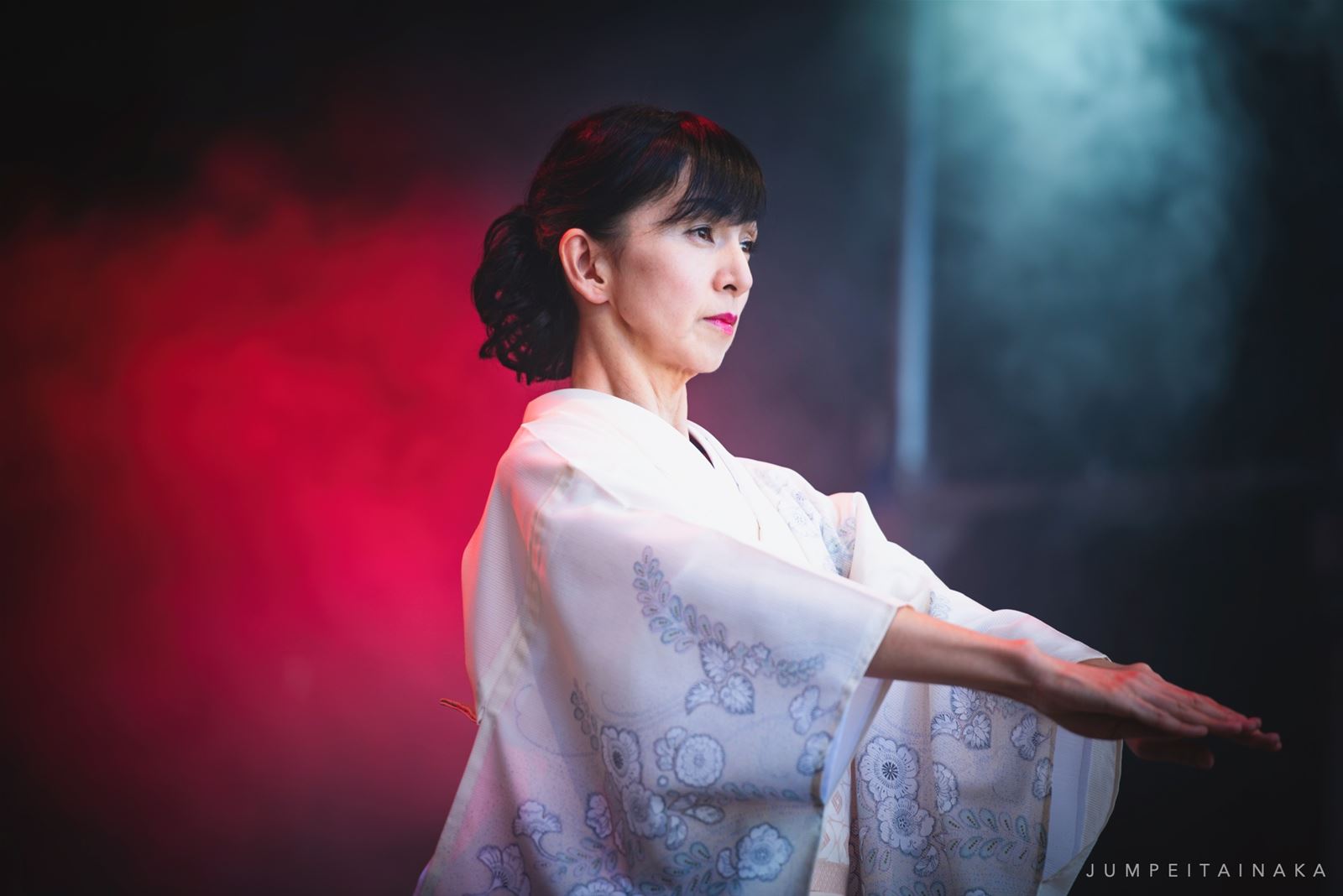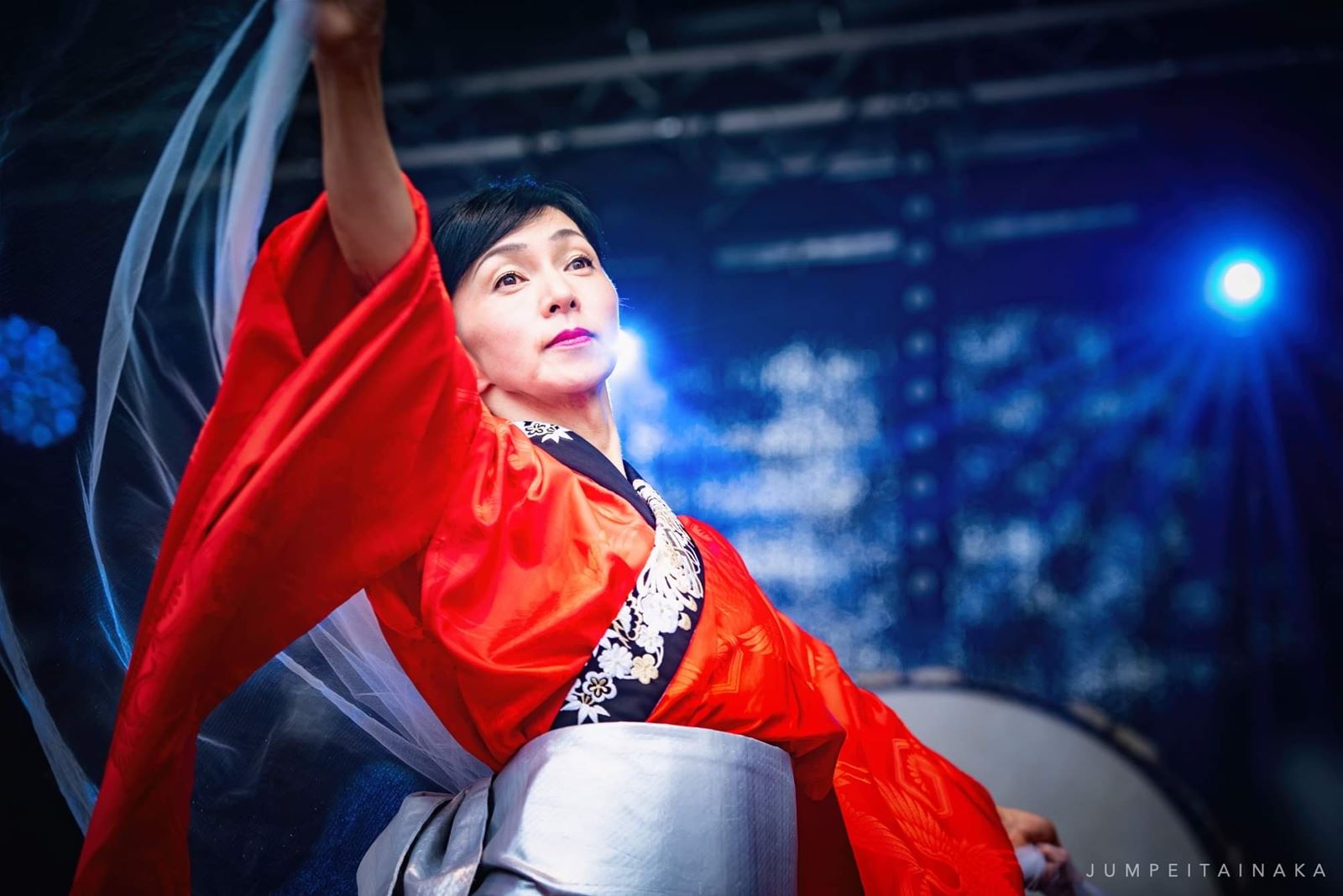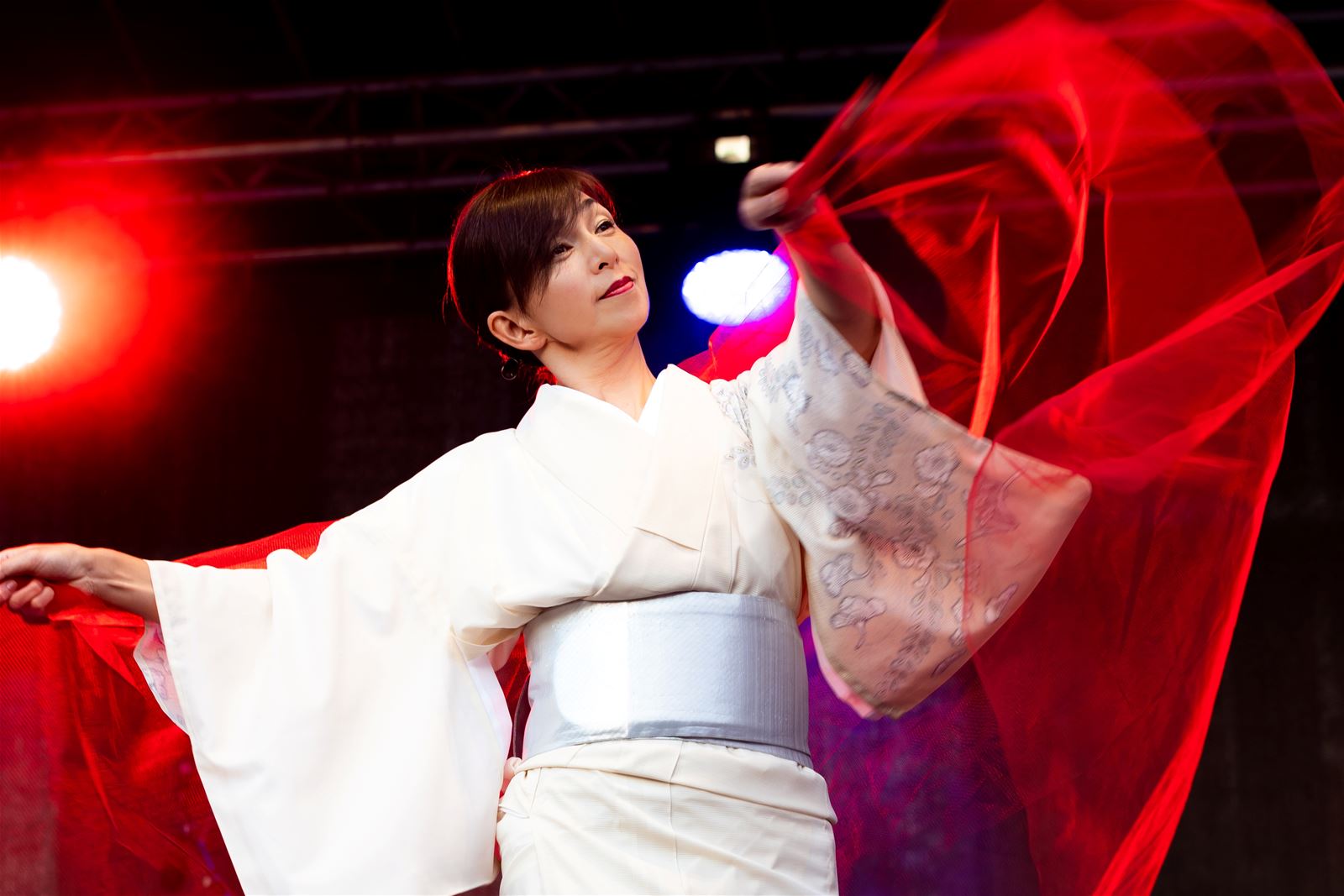The Kyôgen Theatre
Establishment of the Divadlo kjógen - (The Kyôgen Theatre) came as a direct result of the partnership between the cities of Prague and Kyôto in 1996. Key persons for its start were Czech playwright, director and mime Hubert Krejčí, Japanese „Living treasure“ and Ôkura school Kyôgen Master Shigeyama Shime and Japanologist Ondřej Hýbl. Divadlo kjógen is a unique troup that has been working on the Kyôgen genre on a professional level outside of Japan. Its activity is based on a long-standing cooperation between Czech and Japanese theatre artists. The Kyôgen Theatre has on its repertoire more than 20 original plays translated into Czech langage. In 2016, the troupe was awarded by the very prestigious Saikashô Award for the accuracy of the genre's translation outside Japan, by the Nogami Noh Theatre Institute at Hosei University in Tokyo. Since 2023 the Divadlo kjógen story has been presented in textbooks throughout Japan.
Busu (Delicious Poison)
This is a classic kyogen the first mentions of which date back to the 12th century. The master has to leave the house to arrange a very important matter. He orders his servants to take care of the household and especially his treasured casket of busu, in fact delicious sugar that the master claims is a severe poison due to his concerns that the servants might eat it. As soon as the master leaves, the curious servants begin contemplating the nature of the poison casket. Shedding their initial reluctance, they decide to take a closer look at the busu…
Inabado (Inaba Temple)
A tortured and somewhat sheepish man finally takes courage and sends his wife a divorce letter for drinking too much and neglecting the household. He then sets out for the Inaba temple on the fifth street to ask for a new wife. This is where the kyogen begins. The wife will not have it, cuts her visit to her parents short and heads for the temple to take charge of matters… Before ripping her drowsing husband into pieces out of rage, she gets an idea. Adopting a venerable Boddhisatva voice, she tells him that he will find his new wife ordained by the heavens on the ground floor by the fifth gate. Waking up, the husband walks towards the fifth gate and indeed finds a lonely looking woman with a kazuki veil hiding her face. Viewers will immediately realise who the veil is concealing… Following a series of shy questions that the man, overwhelmed by sheer luck, has to ask repeatedly, he takes his new wife home and offers her a modest newlyweds’ toast. What will happen once the veil is taken off following a few cups generously filled with sake and the old-new spouses look each other in the face?
Senyumeji Nishikawa
After graduation of the Nihon University College of Art in Tokyo she become the professional Nihonbuyo dancer. Besides the classical and traditional interpretation of the Nihonbuyo, Sachiko places also much value on the modern interpretation of dance and an innovative integration with the western music and culture. She performs all over the Europe at the Japanese festivals in the cities like Vatican, London, Amsterdam, Paris, Berlin.
Senyumeji Nishikawa is active as the teacher of Nihonbuô with lesson options for children and adults at all levels and also teaches the Kimono dressing skills in Dusseldorf and Frankfurt where she currently lives and performs.
Nihon Buyô is classical style of the Japanese art of dancing. It was evolved from earlier dancing traditions such as Mai and Odori and flourished during the early Edo period as well as through the Kabuki theatre dances. The specific gestures, fan movements, and costumes help in telling the stories of the songs that the dancing accompanies in what is a sophisticated stage dancing artform.


